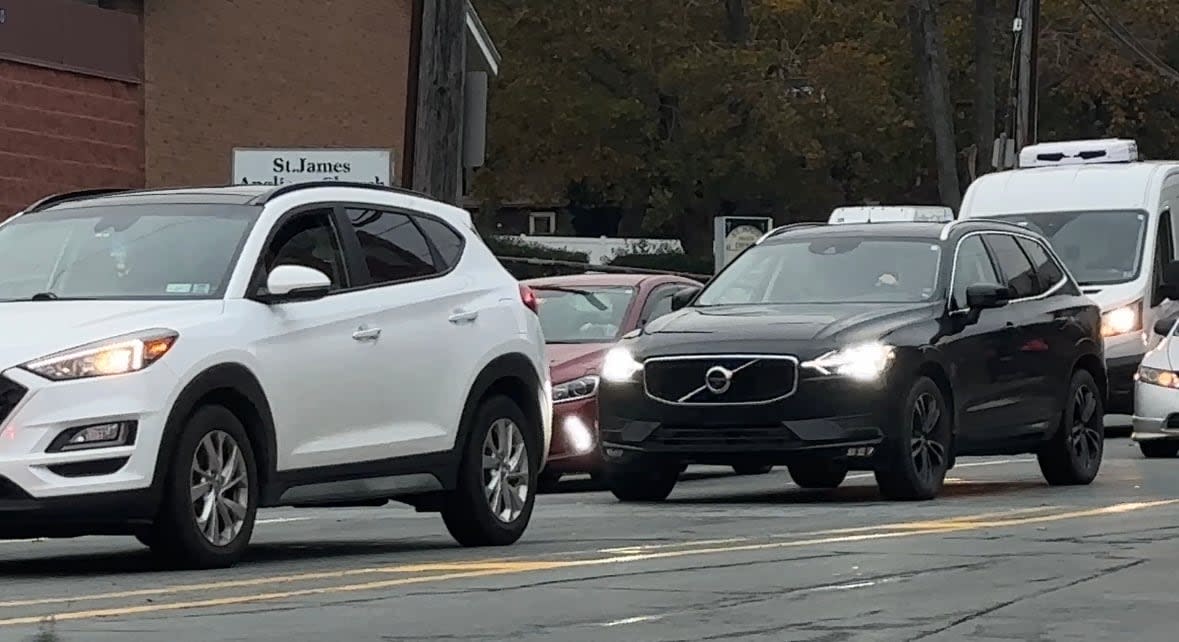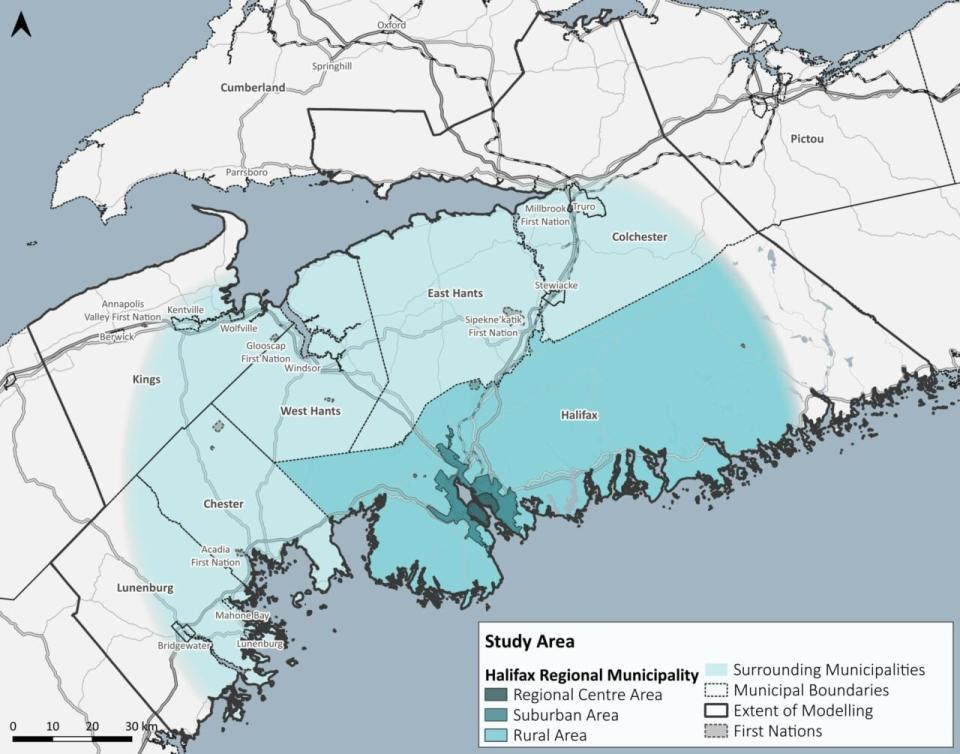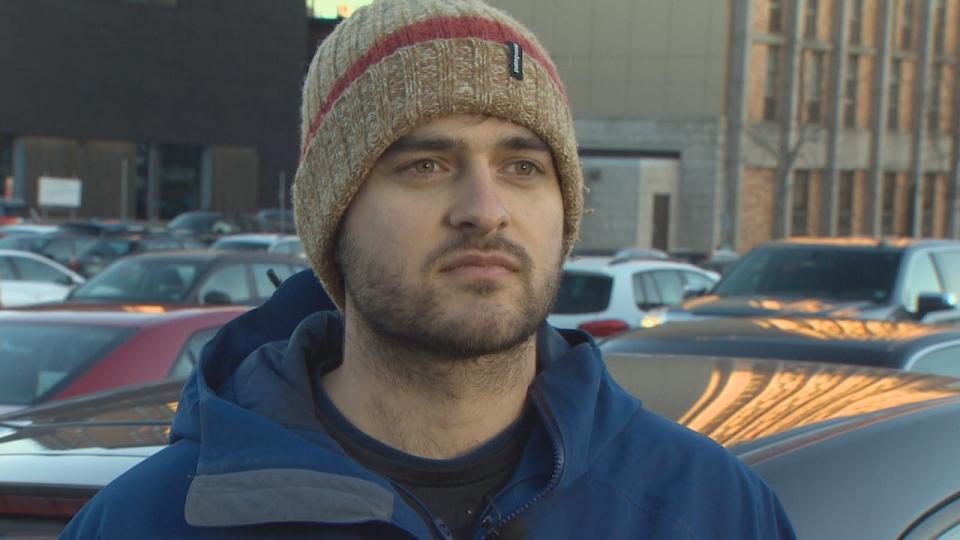Can Nova Scotia's busiest roads handle a booming population?

Drew Hubley grew up in the Halifax area and says traffic didn't used to be this bad.
The 28-year-old used to drive down Highway 102 from Elmsdale, N.S., into the city to study at Dalhousie University. These days he commutes along Highway 101 from his home in Mount Uniacke to his job as an engineer in Halifax's downtown core.
The time it takes to get to his office has more than doubled in recent years, he said.
"I spend about two hours a day in my car," Hubley said. "If there's an accident or something, I've spent upwards of three hours one way.
"It really makes me rethink my life decisions."
As Nova Scotia's population continues to grow, so does the number of vehicles on the road. But there isn't enough being done to give people alternatives to driving cars, Hubley said, leaving them to rely on their own vehicles to get around.
The number of people living in the province has risen by over 100,000 since 2015, pushing the population past one million. Many of those people have chosen the Halifax area, which is on track to hit 500,000 residents this year and is one of the fastest-growing cities in Canada.
There were nearly 69,000 more Class 5 drivers' licences, which are used for most private vehicles such as cars, pickup trucks and vans in Nova Scotia, at the end of 2022 compared to the end of 2012, according to documents obtained by CBC News through a freedom of information request.
"If you're on the 102 every morning or on the 100 series highways, you'll know that traffic has increased," said Mark Peck, CEO of the Joint Regional Transportation Agency.
The Crown corporation Peck leads is aiming to create a transportation system to serve the growing Halifax region over the next 20 years. It's working with 15 municipalities within a one-hour commute from Halifax to develop a plan to make roads safer, assess commercial traffic routes and explore public transportation options, among other things.

The Joint Regional Transportation Agency is working with communities within a one-hour drive from Halifax to create a regional transportation plan. (Joint Regional Transportation Agency)
Peck said they're open to ideas on how to help residents get around more safely and efficiently. One idea that keeps coming up in the consultation process is the possibility of using light rail transit, he said.
"We're certainly hearing that from Nova Scotians within the study area and Nova Scotians at large," he said.
"If you look at other jurisdictions throughout North America, there's all kinds of different modes of transportation that they're looking at and we'll likely incorporate those [in the plan] as well."
Going the wrong way
The number of people who walk, cycle or use transit to get around in the Halifax area has been going in the wrong direction, according to Statistics Canada.
Halifax set a target in 2014 that 30 per cent of trips will be made using modes of transportation other than cars by 2031. But that percentage fell between 2006 and 2016, while the percentage of trips by private vehicles continues to rise, according to data from Statistics Canada.
"Right now, our city is really focused on cars," said Kate Greene, director of regional and community planning with Halifax Regional Municipality.

Commuter Drew Hubley says there needs to be accessible and reliable transit in communities between Halifax and Windsor, N.S., to ease traffic congestion. (Patrick Callaghan/CBC)
The city wants to give residents options to get around, Greene said, while ensuring that essential services are accessible in every community so that people aren't travelling long distances to get what they need.
"How do we make those trips as short as possible so that there's less congestion? How do we give people alternative ways of making trips?" she said.
Building more roads isn't the solution to traffic congestion, Greene said, because it encourage more people to drive.
More people en route
The Nova Scotia government is hoping the influx of people will continue, with the goal of hitting two million residents by 2060.
"It seems like the governments all want the growth, but they haven't put any thought into the infrastructure requirements of this growth that we're seeing," said Hubley.
The province continues to announce more money for highways, he said, but hasn't invested in Halifax's proposed rapid transit system, for example. Nova Scotia should be putting just as much money into highway maintenance and innovative ways for people to commute to and from work, he said.
"I think that's a discrepancy and doesn't align with the stated goals of the environment and climate change, and all these things that we're trying to improve on in this society," Hubley said.
Nova Scotia's Department of Public Works is a core partner of the Joint Regional Transportation Agency and supports the plan that's being developed, the province said in an email.
"While it is too soon to commit to any specific projects or policies, we look forward to the plan's recommendations to prepare the transportation system for future population growth," the statement said.
The provincial government continues to improve road infrastructure by twinning highways 103 and 101, the Highway 107 Sackville-Bedford-Burnside Connector and the Highway 102 Aerotech Connector Project, it said.
MORE TOP STORIES


